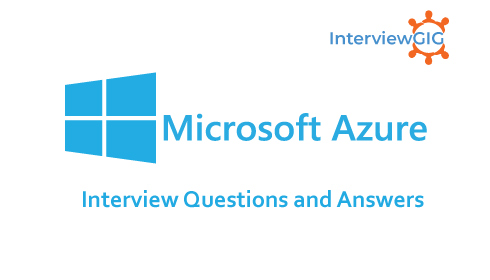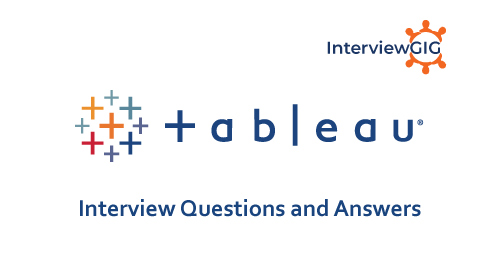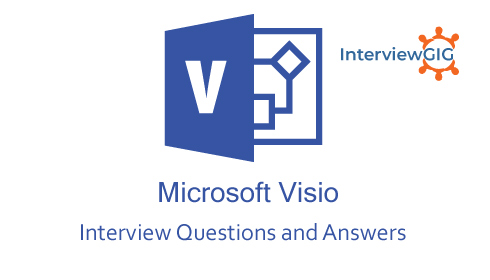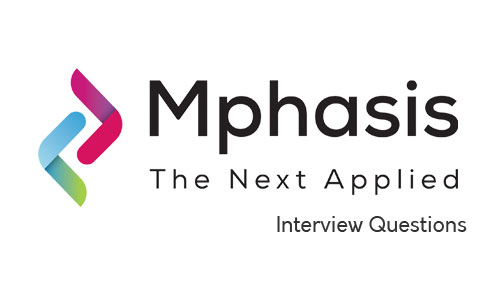What is Microsoft Power BI?
Microsoft Power BI is a free, self-service business intelligence cloud service that has non-technical business users with tools for aggregating, analyzing, visualizing and sharing information. Power BI’s program is fairly intuitive for those users accustomed to excel and its deep integration with alternative Microsoft merchandise makes it a awfully versatile tool that needs little or no upfront coaching. (Power BI is a cloud-based data analysis, which can be used for reporting and data analysis from wide range of data source. It is a Data Visualization and Business Intelligence tool that converts data from different data sources to interactive dashboards and BI reports.)
Why Power BI?
Microsoft Power BI is a powerful analytics tool that helps corporations of all sizes analyze data and share insights. With this technology, enterprises will monitor their business a lot of closely and obtain instant answers with wealthy dashboards on the market for each device Microsoft Power BI is that it’s thus easy to show data into meaningful visualizations quickly. Microsoft Power BI makes this attainable by the drag and drop system of making visuals, pick the visual, choose the information you want in it and boom you’ve got an interactive method of observing your data. you’ll have a report or dashboard getting into minutes once you import your data… Power BI sets up access control through Active Directory (AD), constant instrument panel your organization uses for different Microsoft solutions.
Powerful also means complex — very complex compared to self-service analytics solutions like Tableau. Some relatively simple things (like drawing lines on a map) can get complicated with Excel power tools. And when you’ve finished using up to four different tools on top of Excel, what you get needs a complex mix of SharePoint, Silverlight, Excel and HTML5 to share with other users.
What are the key components of Power BI?
Key components of Power BI are:
Power Query: It can be used to search, access, and transform public and/ or internal data sources.
Power Pivot: In-memory tabular data modelling tool. Imports and integrates data from various sources for the purpose of creating an in-memory data model
Power View: You can analyze, visualize and display data as an interactive data visualization using Power View.
Power Map: It brings data to life with interactive geographical visualization.
Power BI Service: You can share data views and workbooks which are refresh-able from on-premises and cloud-based data sources.
Power BI Q&A: Ask questions and get immediate answers with natural language query.
Data Management Gateway: By using this component you get periodic data refreshers, expose tables and view data feeds.
Data Catalog: User can easily discover and reuse queries using Data Catalog. Metadata can be facilitated for search functionality.
Power BI Desktop: It is used to create reports and data visualizations on the dataset.
Power BI Mobile Apps: Using Power BI mobile apps, you can stay connected to their data from anywhere. Power BI apps are available for Windows, iOS, and Android platform.
Power BI Developer: Power BI offers a wide range of options for developers. This ranges from embedding to custom visuals and streaming datasets
Power BI Report Server: It is a solution that customers deploy on their own premises for creating, publishing, and managing reports, then delivering them to the right users in different ways.
Power BI Embedded: Power BI REST API can be used to build dashboards and reports into the custom applications that serves Power BI users, as well as non-Power BI users.
Power BI Visuals Marketplace: A marketplace of custom visuals and R-powered visuals
What is Business intelligence?
Business Intelligence (BI) refers to technologies, applications and practices for the collection, integration, Data analysis, and presentation of business information. The purpose of Business Intelligence is to support higher business deciding. basically, Business Intelligence systems are data-driven call Support Systems (DSS). BI tools access and analyze data sets and present analytical findings in reports, summaries, dashboards, graphs, charts and maps to supply users with detailed intelligence concerning the state of the business.
What is Data visualization?
Data visualization is the process of displaying data/information in graphical charts, figures and bars. It is used as means to deliver visual reporting to users for the performance, operations or general statistics of an application, network, hardware or virtually any IT asset.
which pricing is available for power bi from academic, government and non-profit?
Non-profit pricing is currently available for Power BI only when availing it directly from Microsoft. While Academic and Government pricing for Power BI is provided via the EA, MSOP/Direct and Open licensing programs. Besides, government pricing can also be availed in syndication.
Can you explain basic building blocks in Power BI?
The basic building blocks in Power BI are:
Visualizations: It is a visual representation of data, such as a chart, a graph, a color-coded map, or other interesting things you can create to represent your data visually.
Datasets: It is a collection of data that Power BI uses to create its visualizations.
Dashboards: When you’re ready to share a single page from a report, or share a collection of visualizations, you create a dashboard.
Reports: A report is a collection of visualizations that appear together on one or more pages.
Tiles: A tile is a single visualization found in a report or on a dashboard. It’s the rectangular box that contains each individual visual.
What is DAX (Data Analysis Expressions)?
The Data Analysis Expressions (DAX) language is a formula language that allows users to define custom calculations in calculated columns and measures. DAX is a collection of functions, operators, and constants that can be used in a formula, or expression, to calculate and return one or more values. Stated more simply,
Can you explain Content Packs?
These are pre-built solutions used for popular services as a major part of the Power BI experience. A subscriber to a supported service can quickly connect to their account from Power BI and see their data through live dashboards and interactive reports that have been pre-built for them.We’ve released content packs for popular services such as Salesforce.com, Marketo, Adobe Analytics, Azure Mobile Engagement, CircuitID, comScore Digital Analytix, Quickbooks Online, SQL Sentry, and tyGraph. Over the coming months, we’ll extend this to include content packs and integrations for Sage, SpaceCurve, Sumo Logic, Zuora, Planview, Insightly, Troux, Inkling, and others
Explain how is the FILTER function used?
The FILTER function returns a table with a filter condition applied for each of its source table rows. The FILTER function is rarely used in isolation, it’s generally used as a parameter to other functions such as Calculate.
Can you explain Power BI Desktop?
Power BI Desktop is a free desktop application you can install right on your own computer. Power BI Desktop works cohesively with the Power BI service by providing advanced data exploration, shaping, modeling, and report creation with highly interactive visualizations. You can save your work to a file, and publish your data and reports right to your Power BI site to share with others
Can you explain Power BI Q&A?
Power BI Q&A is a linguistic communication tool that helps in querying your information and obtain the results you wish from it. you are doing this by writing into a dialog box on your Dashboard, that the engine instantly generates a solution just like Power view interprets your questions and shows you a restated query of what it is looking from your data. Q&A was developed by Server and Tools, Microsoft Research and the Bing teams to give you a complete feeling of truly exploring your data.
Can you explain Microsoft Power Map?
Power Map is a new Excel feature for exploring map and time-based data. Microsoft Power Map for Excel is a three-dimensional (3-D) data visualization tool that lets you look at information in new ways. A power map lets you discover insights you might not see in traditional two-dimensional (2-D) tables and charts.
Can you define Power BI Designer?
Power BI Designer is a standalone app that can be used for making Power BI reports and then uploading it to Powerbi.com. Moreover, it does not need excel.
Explain how one can get started with Power BI?
There are some resources to get assistance and get started with Power BI.
They are as follows:
- Webinars
- Power BI Blog
- You can get started with an article on Power BI
- You can get started with a video on YouTube
- Last but not the least, joining a related community and get answered.
Can you define Power Pivot Data Model?
It is a model that is made up of data types, tables, columns, and table relations. These data tables are typically constructed for holding data for a business entity.
What are the available data sources in Power BI?
The available data sources in Power BI −
- Flat Files
- SQL Database
- OData Feed
- Blank Query
- Azure Cloud platform
- Online Services
- Other data sources such as Hadoop, Exchange, or Active Directory
Can you explain Power View?
Power View is a data visualization technology that lets you create interactive charts, graphs, maps, and other visuals which bring your data to life. Power View is available in Excel, SharePoint, SQL Server, and Power BI.
The following pages provide details about different visualizations available in Power View:
- Charts
- Line charts
- Pie charts
- Maps
- Tiles
- Cards
- Images
- Tables
- Power View
- Multiples Visualizations
- Bubble and scatter charts
- Key performance indicators (KPIs)
What is the difference between Power BI personal gateway and data management gateway?
Power BI Personal Gateway is used for reports that are deployed in Powerbi.com. On the other hand, Data management gateway is an app installed in source data machines in order to help reports to be deployed on SharePoint and can be scheduled to automatic refresh.
What is the difference between Power BI and Power BI Pro?
Power BI offers various kinds of features to help you get started searching data in a complete new way. On the other hand, Power BI Pro caters with some additional features like scheduling data refresh more often than on daily basis, more storage capacity, live data sources along with complete interactivity, and much more.
which language is used to calculate calculated/column field in power pivot?
DAX (Data Analysis expression) is used for calculating calculated/column field in Power Pivot.
What are the basics needed for using Power BI?
To use Power BI, all you need is a web browser and a work email address.
Please be informed that work email addresses finishing in .mil and .gov are currently not supported.
Explain how is data security implemented in Power BI?
Power BI can apply Row Level Security roles to models.
A DAX expression is applied on a table filtering its rows at question time.
Dynamic security involves the utilization of USERNAME functions in security role definitions.
Typically, a table is created in the model that relates users to specific dimensions and a role.
Can you define Excel BI toolkit?
Allowing users to create interactive report by means of importing data from a wide range of sources and model data acc to requirement.
Can you define xvelocity in-memory analytics engine used in power pivot?
The main engine behind power pivot is the xVelocity in-memory analytics engine. It can handle large amount of data because it stores data in columnar databases and in memory analytics which results in faster processing of data as it loads all data to RAM memory. For best result use 64-bit operating system as 64 bit can load more data to RAM.
What are the three Edit Interactions options of a visual tile in Power BI Desktop?
The three edit interaction options are Filter, Highlight, and None.
Filter: It completely filter a visual/tile based on the filter selection of another visual/tile.
Highlight: It highlight only the related elements on the visual/tile, gray out the non-related items.
None: It ignore the filter selection from another tile/visual.
What data sources can I connect to?
The list of data sources for Power BI is extensive, but it can be grouped into the following:
Data from Excel and Power BI Desktop files.
Content packs for services, with ready-made dashboards, reports, and datasets for services such as Salesforce. In addition to establishing a data connection, Power BI provides pre-built dashboards and reports for each of these services.
Connectors to databases and other datasets such as Azure SQL Database and SQL Server Analysis Services tabular data.
Can you explain Power BI administration?
Power BI administration role is assigned to those who require admin privilege on BI Admin portal, without granting Office 365 access. To provide admin access, navigate to Office 365 Admin Center, select Users and then Active Users.
How does SSRS integrate with Power BI?
Below are some of the way through which SSRS can be integrated with Power BI:
Clicking the tile in Power BI dashboards will bring the user to the SSRS report.
Certain SSRS Report items such as charts can be pinned to Power BI dashboards.
A subscription is created to keep the dashboard tile refreshed.
Power BI reports will soon be able to be published to SSRS portal
Can you explain Building Blocks of Power BI?
Building Blocks are the collection, package, or combination of the things or functionality that are put together in a set of manner to make something exist.
The building block of Power BI include the following:
- Visualizations: Representation of data in the form of visuals
Example: Pie Chart, Line Graph, Bar Charts, tree map, etc.
- Datasets: Dataset is a collection of data that Power BI uses to create its visualizations.
Example: Excel sheets, SQL server tables, Text/CSV file, etc.
- Reports: Report is a collection of visualizations that appear together on one or more pages.
Example: Amount by Channel, Amount by Product, Sales by Country, Sales by State
- Dashboards: Dashboard is single layer presentation of multiple visualization.
Example: Geographical maps and bar charts, Sales dashboard can have pie charts
- Tiles: Single visualization on the dashboard represented as a Tile.
Example: Pie Chart in Dashboard or Report
Can you explain different Power BI Components?
- Power Query: it mashes the data and transforms it.
- Power Pivot: it helps in data Modelling.
- Power View: Data Visualization tool.
- Power Map: It helps in 3D viewing the geo maps.
- Power Q&A: It helps Assisting in natural language. Question and answering engine.
- Power BI Service: It is a companion tool of Power Bi.
- Data Management Gateway: It joins data to the cloud.
- Data Catalog: to recover & reuse queries.
Can you explain different Types of filters in Power BI?
We can apply filters at four different levels in the Power BI dashboard or report.
- Visual-level filters: Filters applied to the visual level are applied directly to individual visualizations.
- Page-level filters: Page-level filters are designed for a specific page of reports, which typically contain multiple pages.
- Report-level filters: It is used to apply a filter condition to the entire report. The report-level filter will be applied to every visualization and every page of the report.
- Detailed filters: there filters allow us to move between pages of the report with a filter applied.
What do you know about Data Analysis Expressions (DAX)?
Data Analysis Expression is language developed by Microsoft to interact with data in a variety of their platforms like Power BI, PowerPivot and SSAS tabular models. It is used to compute calculated column and calculated field. To do basic calculation and data analysis on data in power pivot, we use Data Analysis Expression (DAX).
What do you know about DAX Functions?
DAX Functions provides detailed information including syntax, parameters, return values, and examples for each of the over 250 functions used in Data Analysis Expression (DAX) formulas.
Below are the Some of DAX Functions
- Date and time functions
- Filter functions
- Financial functions
- Information functions
- Logical functions
- Math and Trig functions
- Parent and Child functions
- Relationship functions
- Statistical functions
- Text functions
How will you get Data from data sources in Power BI?
Get Data feature offers data connectivity to a number of different data sources. Get Data option is available on the Menu bar of Power BI Desktop main page.
What are the most common data shaping techniques?
The most common data shaping techniques are:
- Adding Indexes
- Applying for a sort order
- Removing columns and rows
- Implementing a sort order
- Grouping rows
- Pivoting columns
- Creating custom columns
How to represent different levels of hierarchy of data in one singe visualization?
- Step 1: Create a hierarchy by grouping the required data from the data tab and pull that into Axis Tab and Enable drill down option by clicking on down arrow on the chart.
- Step 2: Pull all the hierarchical columns separately in to the axis pane in the order of their hierarchy and enable the drill down action by clicking on down arrow on the chart.
- Note: Both Step 1 and Step 2 will serve the same purpose.
Can you explain Get Data’ icon in Power BI?
When users in Power BI click on the icon “Get Data”, a drop-down menu appears displaying all data sources from which data can be ingested. Data can directly get ingests from any source such as files in Excel, XML, PDF, JSON, CSV, and SharePoint folder databases and formats such as SQL, SQL Server Analysis Services, IBM, Access, Oracle, MySQL, and much more.
See More: Free Power BI Courses
How do you manage a role in Power BI?
Follow these steps to manage a role in Power BI
Step 1: Import data into the Power BI Desktop report
Step 2: connection
Step 3: Select the Modeling tab.
Step 4: Select Manage Roles.
Step 5: Select Create.
Step 5: Provide a name for the role.
Step 6: Select the table that you want to apply a DAX rule.
Step 7: Enter the DAX expressions.
Step 8: After creating DAX expression, select the checkbox placed above the expression and validate the expression.
Step 9: Select Save.
Is Power BI better than Tableau?
Both Tableau and Power BI allow the user to connect to distinct data sources. However, Tableau provides better support to connect to a different data warehouse, and Power BI is heavily integrated with Microsoft’s portfolio like the Azure cloud platform.
Some Important Power BI Interview Questions
- Can you explain the security level of Power BI?
- Can you explain the fundamental concepts of DAX?
- Can you explain grouping how you use it?
- Can you explain Row-level security?
- What do you know about content pack?
- How will you create calculated columns in Power BI?
- How will you create dash boards in Power BI?
- How will you create visualizations in Power BI?
What are the pros of Power BI?
Pros of Power BI
- Power BI puts business intelligence creation into the hands of analysts who will extract source data, produce a dataset, rework or manipulate the information, visualize the data and publish the ensuing reports and dashboards. For progressive or iterative analysis, analysts will evolve the bi with new measures or dimensions while not requiring IT involvement.
- The dashboard visualizations are best in class and continually updated from the community. Interactive geo-map visualizes The Question and Answer (Q&A) function may be the top cited benefit and capability in achieving self-service BI actions are empowered by Bing Maps.
- The Data Analysis Expressions scripting language is a relatively simple construct used to create calculated columns and measures. It’s similar to Excel, although while Excel is cell based, DAX is column based.
- The underlying Power BI technology is an in-memory analytics engine and columnar information that supports tabular datastore structures utilized by Power Pivot. This achieves a balance between performance and simple use (as compared to three dimensional cubes that need additional complicated assembly and query languages, comparable to MDX (multidimensional expressions) for SSAS).
- The pace of innovation is amazing. The product is updated about monthly.
- The free version reduces acquisition barriers.





